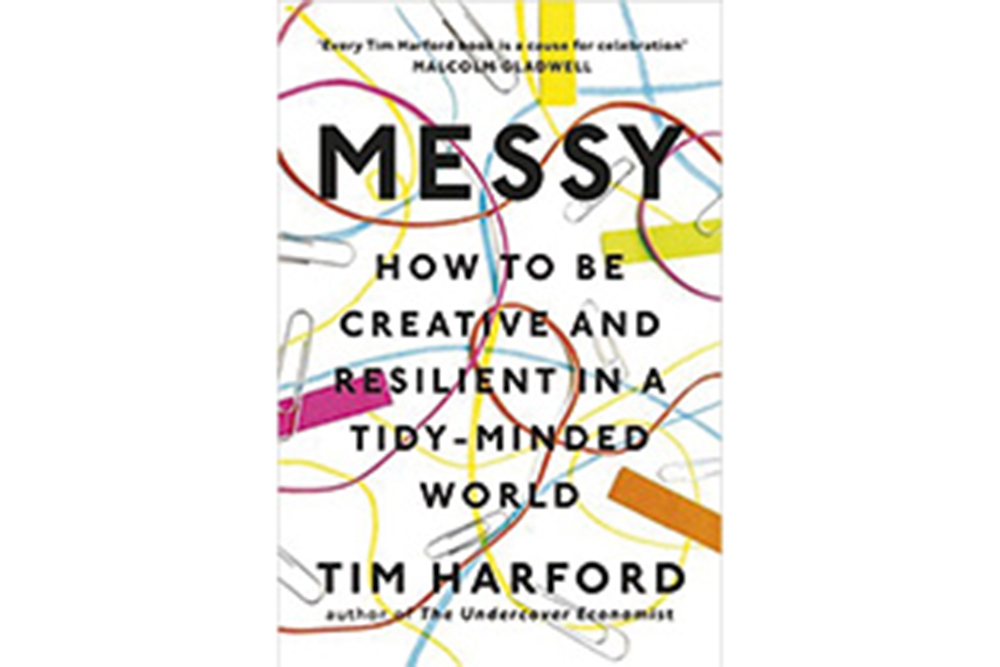I once earned a box of Quality Street chocolates from the CEO for cleaning up my desk. The marketing team prided itself on being able to find anything required — from press releases to printouts of corporate decks to magazines — in the mountainous piles that reached the floor. Our department was an eyesore in the newly erected, modern cubicle setting of the corporate headquarters, and it seemed a small price to achieve its goal. At another company, many years later, I was deeply upset by their refusal to let me keep two cane-basket chairs (that I bought) in what was designated as ‘my’ terrace and which had access only from ‘my’ cabin. What was the point of saying it was ‘my’ space if they were going to object to my furniture?
In his new book Tim Harford explains why companies try to impose order at all costs —including interfering with workspaces — and how it impacts team dynamics. By throwing light on the many good aspects of clutter, chaos and untidiness, Tim Harford retains the title of being my favourite economist. The book is in defense of being messy, and tells you how to create a positive one. I was happy to find out that those externally imposed attempts at neatness and uniformity are actually counter-productive and they would have done better to have empowered employees to express themselves, or at least let them be.
Over the years, as a corporate employee, I grudgingly went for my fair-share of HR-mandated team-building trips. I just did not enjoy rappelling up a steep rock, getting tossed out of a banana boat or group yoga. Since my bosses had a tendency to quit or be fired shortly after these corporate fun fests, I also doubted their effectiveness. Turns out my scepticism was based on science — it is better to find a common goal for the team than just build a happy, cohesive, homogenous team. In fact, diverse teams that don’t always get along may be more productive. I worked in an ad agency and there was a distinct rivalry amongst the different groups — creative, client servicing, finance and media planning — and the slanging matches often produced bursts of creativity and productivity. The book helps you understand why this works.
Messy combines economics, psychology and science to provide examples of situations where chaos, even artificially-simulated chaos, has a powerful, positive effect on work. There are tips on how you can create an environment where creativity thrives and where people are more productive. Slice-of-life stories of how things have gone horribly wrong juxtaposed with examples of how things have turned out surprisingly well ensure that the book is an engaging read. It is also a cautionary tale for managers: do not impose your personal standards of tidiness on those in your control. Often, a messy, distractible mind is a sign of creativity, and needs to be left unfettered. The most productive workplaces are those where you have the opportunity to constantly interact with new areas and people not like yourself as they stimulate you and move you out of your comfort zone.
You should read this book if you’ve ever had an idea while in the shower or doing something completely disconnected with the problem at hand. You’ll understand why this happens and more importantly, how to artificially recreate that situation. You should certainly read this book if you are a messy person because you will discover that messiness isn’t a crime but a virtue. The book will give you the data-points to fight for your right to be untidy, to bring your family photos to work, or dye your beard silver.
You should also read this book if you’re not messy, more so if you are in a position to have control over the way other people work. It will teach you about what happens when you impose your sense of order upon the hapless cubicle serfs, or worse, when you hold yourself on too tight a rein. You should most definitely read the book if you’re a parent — you’ll understand that when you stamp out messiness, you are also stamping out a growth path of creativity.











